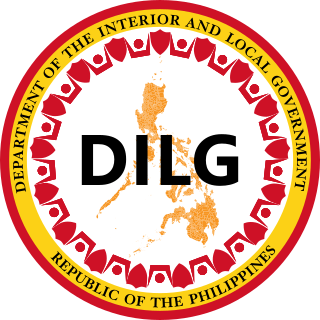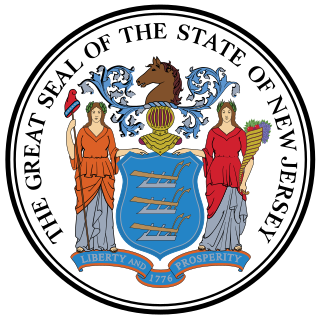Related Research Articles

The United States Forest Service (USFS) is an agency of the U.S. Department of Agriculture that administers the nation's 154 national forests and 20 national grasslands, which encompass 193 million acres (780,000 km2). Major divisions of the agency include the National Forest System, State and Private Forestry, Business Operations, and the Research and Development branch. Managing approximately 25% of federal lands, it is the only major national land agency that is outside the U.S. Department of the Interior.
Natural Resources Conservation Service (NRCS), formerly known as the Soil Conservation Service (SCS), is an agency of the United States Department of Agriculture (USDA) that provides technical assistance to farmers and other private landowners and managers.

Fire safety is the set of practices intended to reduce the destruction caused by fire. Fire safety measures include those that are intended to prevent ignition of an uncontrolled fire, and those that are used to limit the development and effects of a fire after it starts.

Water damage describes a large number of possible losses caused by water intruding where it will enable attack of a material or system by destructive processes such as rotting of wood, growth, rusting of steel, de-laminating of materials such as plywood, and many others.

The Rehabilitation Act of 1973,, is a federal law, codified as 29 U.S.C. § 701 et seq. The principal sponsor of the bill was Rep. John Brademas [IN-3]. The Rehabilitation Act of 1973 replaces the Vocational Rehabilitation Act of 1973, to extend and revise the authorization of grants to States for vocational rehabilitation services, with special emphasis on services to those with the most severe disabilities, to expand special Federal responsibilities and research and training programs with respect to individuals with disabilities, to establish special responsibilities in the Secretary of Health, Education, and Welfare for coordination of all programs with respect to individuals with disabilities within the Department of Health, Education, and Welfare, and for other purposes.

The Safe Drinking Water Act (SDWA) is the principal federal law in the United States intended to ensure safe drinking water for the public. Pursuant to the act, the Environmental Protection Agency (EPA) is required to set standards for drinking water quality and oversee all states, localities, and water suppliers that implement the standards.

The Philippine Department of the Interior and Local Government, abbreviated as DILG, is the executive department of the Philippine government responsible for promoting peace and order, ensuring public safety and strengthening local government capability aimed towards the effective delivery of basic services to the citizenry.
Alberta Municipal Affairs is a ministry of the Executive Council of Alberta. Its major responsibilities include assisting municipalities in the provision of local government, administering the assessment of linear property in Alberta, administering a safety system for the construction and maintenance of buildings and equipment, and managing Alberta's network of municipal and library system boards.
Title 42 of the United States Code is the United States Code dealing with public health, social welfare, and civil rights.
The Pennsylvania Department of Environmental Protection (DEP) is the agency in the U.S. state of Pennsylvania responsible for protecting and preserving the land, air, water, and public health through enforcement of the state's environmental laws. It was created by Act 18 of 1995, which split the Department of Environmental Resources into the Department of Environmental Protection and the Department of Conservation and Natural Resources. Its current secretary is Patrick McDonnell.
The National Historic Preservation Act of 1966 (NHPA) envisioned a funding source to provide states with matching funds to implement the Act. The Act was to be implemented through partnerships with states, Indian Tribes, Native Hawaiians, local governments, nonprofit organizations, and the private sector. It brought forth state programs to implement much of the Act; a National Register of Historic Places encompassing a wide range of sites and structures deemed historic; partnerships at all levels of government; incentives; assistance; and reviews. The NHPA endorsed the use of federal financial support for the national preservation program and called for two basic categories of assistance, both of which provide funding, rather than technical assistance, for historic preservation projects and to individuals for the preservation of properties listed in the National Register of Historic Places. Since enactment in 1966, repeated efforts to fund the HPF was realized after a 10-year campaign when consistent funding was authorized on September 28, 1976, through Public Law 94-422. The law amended the National Historic Preservation Act to establish a funding source known as the Historic Preservation Fund for a historic preservation grant program to provide assistance to non-federal entities.

The New Jersey Department of Community Affairs is a governmental agency of the U.S. state of New Jersey. The department is headed by Commissioner Sheila Oliver, who is also serving as Lieutenant Governor of New Jersey.
The Virginia Department of Forestry (VDOF) was established in 1914 to prevent and suppress forest fires and reforest bare lands. Since its inception, the agency has grown and evolved to encompass other protection and management duties:

The National Rural Water Association (NRWA), with its affiliated state rural water associations, is the largest water and wastewater utility membership organization in the United States of America. The NRWA is a professional organization that supports rural and small water utilities throughout the nation. NRWA and its state affiliates are organized as a non-profit trade association, and represent more than 31,000 water and wastewater utility members.

The Indian Self-Determination and Education Assistance Act of 1975 authorized the Secretary of the Interior, the Secretary of Health, Education, and Welfare, and some other government agencies to enter into contracts with, and make grants directly to, federally recognized Indian tribes. The tribes would have authority for how they administered the funds, which gave them greater control over their welfare. The ISDEAA is codified at Title 25, United States Code, beginning at section 5301.

The Agriculture Risk Protection Act of 2000 made major revisions to the United States' federal crop insurance program and provided emergency agricultural assistance. The crop insurance provisions significantly increased the program's government subsidy; improved coverage for farmers affected by multiple years of natural disasters; and authorized pilot insurance programs for livestock farmers and growers of other farm commodities that were not served by crop insurance, among many other provisions. The emergency provisions made available a total of $7.14 billion in emergency farm assistance, mostly in direct payments to growers of various commodities to compensate for low farm commodity prices.

The New York State Department of State (NYSDOS) is the department of the New York state government under the leadership of the Secretary of State of New York. Its regulations are compiled in title 19 of the New York Codes, Rules and Regulations.
The Ohio Environmental Protection Agency is the administrative department of the Ohio state government responsible for protecting the environment and public health by ensuring compliance with environmental laws. Those laws and related rules outline Ohio EPA's authority and what things the Agency can consider when making decisions about regulated activities.

The Nebraska Forest Service is the state forestry agency for the state of Nebraska. The Nebraska Forest Service serves the citizens on Nebraska by operating with the mission to provide services and education to the people of Nebraska for the protection, utilization and enhancement of the State's tree, forest and other natural resources. Headquartered in Lincoln, Nebraska, the Nebraska Forest Service is embedded within the Institution of Agriculture and Natural Resources at the University of Nebraska-Lincoln.
References


The Congressional Research Service (CRS), known as Congress's think tank, is a public policy research arm of the United States Congress. As a legislative branch agency within the Library of Congress, CRS works primarily and directly for Members of Congress, their Committees and staff on a confidential, nonpartisan basis.